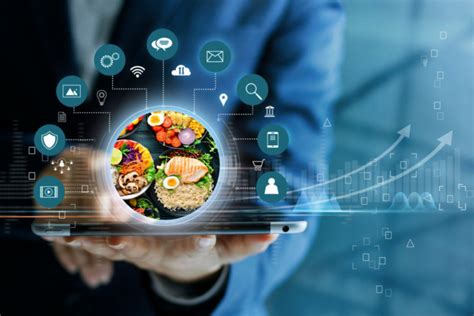Technology Trends in the Food and Beverage Industry: A Recipe for Success
The food and beverage industry is undergoing a significant transformation, driven by rapid technological advancements. From farm to fork, technology is streamlining processes, enhancing customer experiences, and shaping the future of what we eat and drink. This article explores some of the most impactful technology trends currently reshaping this dynamic sector.
1. Automation and Robotics: Efficiency on a Larger Scale
Automation is no longer a futuristic concept; it's a present-day reality in food and beverage production. Robotics are revolutionizing everything from harvesting and processing to packaging and delivery.
- Automated Harvesting: Robots are being deployed to harvest crops more efficiently and with less waste, addressing labor shortages and improving yield.
- Automated Processing: Automated systems handle tasks like slicing, dicing, and mixing with greater precision and speed than human workers, minimizing inconsistencies and maximizing output.
- Automated Packaging: High-speed robotic systems package products with increased efficiency, accuracy, and hygiene, ensuring consistent quality and reducing manual labor.
The Benefits: Increased efficiency, reduced labor costs, improved consistency, and minimized waste.
2. Big Data and Analytics: Data-Driven Decisions
Data is the new oil, and the food and beverage industry is leveraging it to gain valuable insights. Big data analytics provides actionable intelligence that helps businesses make strategic decisions across the value chain.
- Predictive Analytics: Forecasting demand, optimizing inventory management, and identifying potential supply chain disruptions.
- Personalized Recommendations: Tailoring product offerings and marketing strategies based on individual customer preferences and purchasing behavior.
- Improved Quality Control: Identifying and preventing food safety issues through real-time data monitoring and analysis.
The Benefits: Enhanced decision-making, improved efficiency, increased profitability, and enhanced customer satisfaction.
3. Artificial Intelligence (AI) and Machine Learning (ML): Smart Solutions
AI and ML are transforming various aspects of the food and beverage industry, creating smarter, more efficient operations.
- Quality Control: AI-powered vision systems detect defects in products, ensuring consistent quality and minimizing waste.
- Recipe Optimization: AI algorithms can analyze vast datasets to optimize recipes for taste, cost, and nutritional value.
- Personalized Nutrition: AI can analyze dietary data to create personalized meal plans and nutritional recommendations.
The Benefits: Improved quality control, optimized recipes, enhanced customer experiences, and innovative product development.
4. Blockchain Technology: Enhancing Transparency and Traceability
Blockchain technology offers increased transparency and traceability throughout the food supply chain.
- Tracking Ingredients: Consumers can trace the origin and journey of their food, ensuring product authenticity and safety.
- Combating Counterfeiting: Blockchain's secure and immutable ledger helps prevent fraud and protect brand integrity.
- Improving Supply Chain Management: Enhanced visibility and tracking capabilities improve efficiency and responsiveness.
The Benefits: Increased transparency, enhanced traceability, improved food safety, and strengthened consumer trust.
5. The Rise of Sustainable and Ethical Practices: Meeting Consumer Demands
Consumers are increasingly demanding sustainable and ethically sourced products. Technology plays a crucial role in meeting these demands.
- Precision Agriculture: Using technology to optimize resource use, minimize environmental impact, and improve crop yields.
- Sustainable Packaging: Developing eco-friendly packaging solutions to reduce waste and protect the environment.
- Traceability and Transparency: Consumers are more informed than ever, and technology helps track ethical sourcing and sustainability practices.
The Benefits: Reduced environmental impact, improved brand reputation, and increased consumer loyalty.
Conclusion: A Future Shaped by Technology
The food and beverage industry is embracing technology at an unprecedented pace. These trends are not just about improving efficiency; they are about creating a more sustainable, transparent, and customer-centric industry. Companies that adapt and innovate will be well-positioned to thrive in this rapidly evolving landscape. The future of food is undeniably technological.
